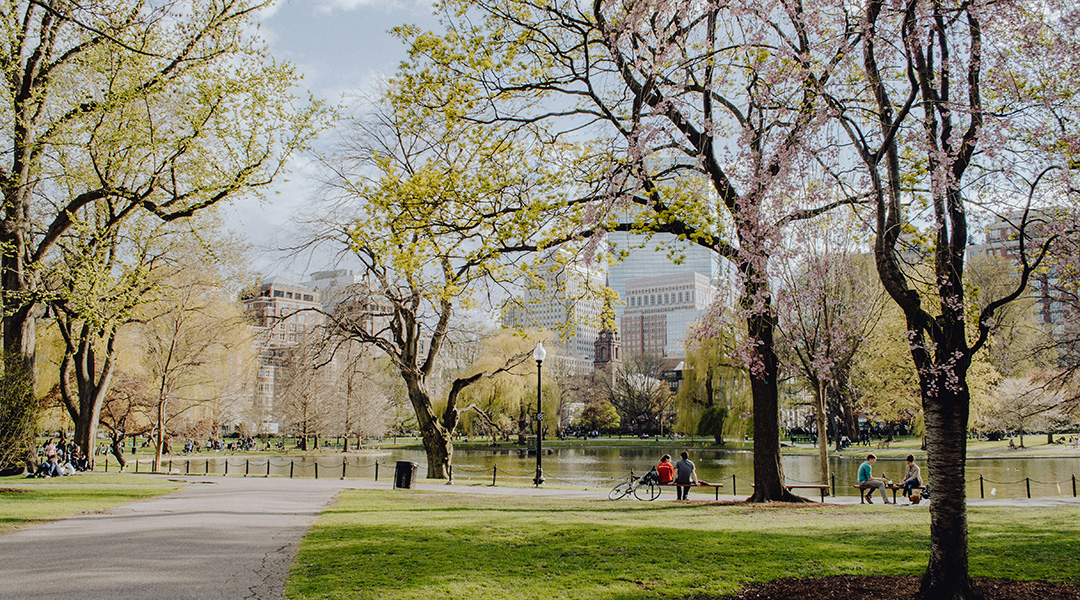A new study has found that experiencing nature, such as taking a walk in a park or even just viewing photos of a natural setting, encourages healthier food choices.
In an increasingly urbanized society, many individuals are more likely to spend less time immersed in nature. While numerous studies have pointed to the positive effects nature has on both our physical and mental well-being, this is the first study to demonstrate a causal link to healthy eating habits.
“Our hope is that this work can help us develop a greater understanding of how our environments influence our choices, and how we can construct an environment that is more conducive to beneficial outcomes in the long run, such as good health and well-being,” explained Maria Langlois, assistant professor at Southern Methodist University and first author of the study.
“We found that exposure to nature increases the importance that people attach to health compared to taste or other attributes when making food choices,” she added. The team believed there was an implicit connection between nature and health, and now have data to back it up.
Nature boosts healthy food choices
In a blog post, Langlois attributes inspiration for the current study to a charity bike ride she participated in, where she noticed both she and her teammates seemed to crave healthier food while in natural environments compared to urban settings.
To find out if this was a phenomenon experienced by others too, she embarked on a Ph.D. study with Pierre Chandon, a food marketing researcher and professor at INSEAD Business School in Fontainebleau, France.
Before this, previous work only showed an association between closeness to nature and wellbeing without investigating the mechanisms and causes. There has been some evidence suggesting experiences in nature lead to healthier food choices, but such studies typically use self-reported craving questionnaires, did not have control populations, or lacked conclusive proof.
Gathering evidence from hundreds of participants from five different studies across three countries over seven years, Langlois examined the food choices made after both real-world and virtual experiences of nature. In the first study conducted in France, participants took a twenty-minute long walk through either a large green park or the city, taking photos along the way.
Afterwards, they could choose what they wanted to eat from a snack buffet, framed as compensation for the “photography” task just completed. Those who walked in nature ate healthier snacks compared to the urban city walkers.
But was it the immersion in nature or would a photo also do the trick? The researchers moved online, recruiting American participants who were asked to imagine they had just won a holiday.
One group were shown a photo of a hotel room with a window view of a natural setting while the other group had a window view of an urban setting. A third control group had no window view — they had closed curtains. Those exposed to “nature” in this way were found to make healthier food choices compared to both the control and urban groups.
“By incorporating a control condition in our work, this research shows that it is not exposure to urban environments that is driving unhealthy food choices, but really exposure to natural environments that is driving healthier food choices,” said Langlois.
A subconscious link drives these positive dietary habits
The researchers believe that a driver behind this trend could be a subconscious link between nature and health, which influences our decisions. To delve into this, the team used a widely accepted test known as the implicit association task, which detects subconscious associations between mental representations of objects in memory.
“Essentially, it shows that people are faster at sorting together pairs of words when one of the words is linked to health (e.g., beneficial, fitness, life, nutritious, strong) and the other to nature (e.g., countryside, flower, forest, grass, lake) compared to when the second word is related to cities (e.g., building, car, concrete, downtown, highway),” explained Chandon.
This research could be relevant for consumers, parents, schools, and employers who may want to encourage healthier eating habits. For example, employers could prioritize green spaces for employees or even have images of nature in cafeterias, and the same could be applied to schools.
With almost 70% of the world’s population expected to live in urbanized areas by 2050, this research could also provide urban planners important insight into the health implications of their designs.
“Having the ability to access nature is an important factor for public health and population well-being, and it should be considered when designing cities,” Langlois remarked. “Additionally, urban planning and design should pay particular attention to underserved areas that are often times both depleted of safe, accessible nature spaces and are also food deserts, depleted of fresh, healthy foods.”
It is also hoped that highlighting wellbeing benefits of nature may promote environmental conservation efforts as people realize, we need nature.
Reference: Langlois, M, Chandon, P, Experiencing nature leads to healthier food choices, Communications Psychology (2024). DOI: 10.1038/s44271-024-00072-x
Feature image credit: Kelly Sikkema on Unsplash

















